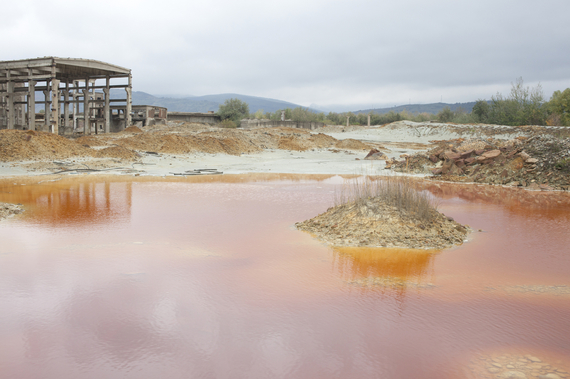- February 4, 2016
- in Green Tips
- by marcos
- 629
- 0

By
Hardrock mining has left a toxic legacy in communities across the country. Under a new court-approved settlement, EPA must issue regulations that will force companies to set aside money to clean up the messes they make.
Last Friday, the D.C. Circuit Court of Appeals affirmed a settlement Sierra Club and other environmental groups reached with the U.S. Environmental Protection Agency (EPA) that establishes a timeline for the agency to issue regulations ensuring that polluters–not taxpayers–pay to clean up their toxic messes. The settlement resolved litigation brought by the Sierra Club, Idaho Conservation League, Earthworks, Amigos Bravos, Great Basin Resource Watch, and Communities for a Better Environment, represented by Earthjustice, seeking regulations requiring facilities that produce hazardous waste to maintain evidence of their financial ability to cover cleanup costs.
These financial assurance regulations are long overdue: for more than 30 years, the Comprehensive Environmental Response, Compensation, and Liability Act (CERCLA) has required EPA to develop rules requiring industries that handle hazardous substances to have a financial security mechanism in place, such as a bond or insurance policy, to cover the costs of cleanup from their operations. All too often, polluters declare bankruptcy or shelter assets to avoid shouldering the costs of environmental disasters. When the companies skip town, the burden of paying for cleanup falls on taxpayers. Cleanup bills are paid from a public trust fund, known as the “Superfund,” but polluting industries have dodged their responsibilities for so long that this trust is currently underfunded by over $100 million. This shortfall leads to significant delays in cleaning up Superfund sites, prolonging the dangers to public health and the environment.
After the Club and its allies brought a previous lawsuit in 2008 to compel EPA to follow the law, the agency issued findings that financial assurance rules were warranted for four industries: metal (“hardrock”) mining; chemical manufacturing; petroleum and coal products manufacturing; and electric power generation, transmission, and distribution (largely focused on coal ash pollution from coal-burning power plants). Although EPA has announced its intent to propose a rule for hardrock mining several times over the last decade, the agency continued to drag its feet, and so environmental groups brought this new lawsuit to force EPA to act.
The court’s decision puts an end to this decades-long delay with a binding schedule on EPA to complete the rules, which have been vigorously opposed by industry. EPA must now complete the draft financial assurance regulations for hardrock mining by December 1, 2016, and finalize the regulations by the end of 2017. The agency must also make formal determinations of whether to regulate the three other industries–coal ash ponds, chemical manufacturing facilities, and petroleum and oil refineries–by the end of this year; final regulations would then be due between 2019 and 2024.
Implications for Standing
The D.C. Circuit’s decision also is good news for the broader environmental community, specifically for environmental groups’ ability to bring agencies to court when they unreasonably delay their mandatory duties. The court affirmed the legal standing of the Sierra Club and our allies based on demonstrations that EPA’s lack of financial assurance rules put our members in harm’s way and that the required rules would redress that injury.
Recently, in Clapper v. Amnesty International, 133 S.Ct. 1138 (2013), the U.S. Supreme Court cast some doubt on the ability of citizens to challenge government regulations–or lack thereof–unless they prove that injury is “certainly impending.” Here, the court took a commonsense approach, recognizing that Sierra Club members who live in harm’s way–whether next door to a coal-burning power plant, in the shadow of a coal ash dam, or downstream from a petro-chemical facility–and who have been and will continue to be harmed by pollution from hazardous waste, should be able to demand regulations that could make sure the waste is cleaned up. The court rightly recognized that “financial assurance requirements would redress their injuries by incentivizing these industries to limit hazardous releases and by reducing cleanup delays.”
The industries subject to financial assurance requirements have left a toxic legacy in communities across the country: the EPA estimates that one in four Americans lives within three miles of a hazardous waste site. Putting these rules in place will help protect public health and the environment by pushing companies to internalize the true costs of their operations and creating much-needed incentives to reduce risk and properly handle hazardous waste.
Image Source:
Copper Mine Tailing Pond – iStock
— This feed and its contents are the property of The Huffington Post, and use is subject to our terms. It may be used for personal consumption, but may not be distributed on a website.


